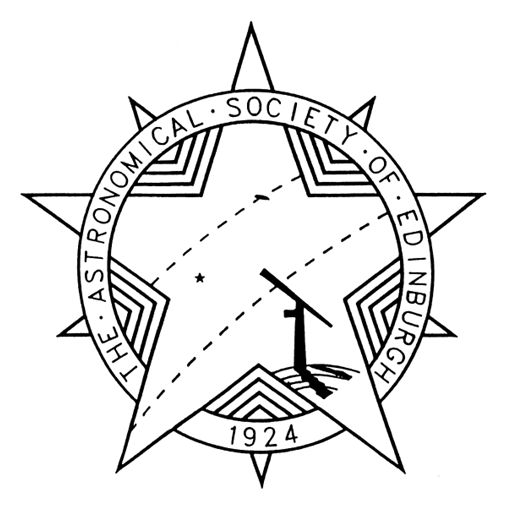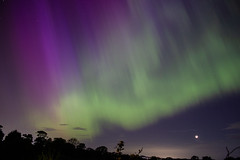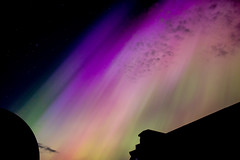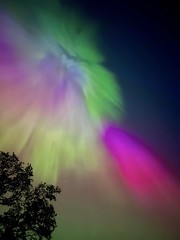Monthly Archives: November 2015
Scotland’s Sky in November, 2015
November nights end with planets on parade

The maps show the sky at 21:00 GMT on the 1st, 20:00 on the 16th and 19:00 on the 30th. (Click on map to englarge)
With the return of earlier and longer nights, astronomy enthusiasts have plenty to observe in November. As in October, though, the real highlight is the parade of bright planets in our eastern morning sky.
The first to appear is Jupiter which rises above Edinburgh’s eastern horizon at 02:04 GMT on the 1st and by 00:35 on the 30th. More conspicuous than any star, it brightens from magnitude -1.8 to -2.0 this month as it moves 4° eastwards in south-eastern Leo. It lies 882 million km away and appears 33 arcseconds wide through a telescope when it stands 4° to the left of the waning Moon on the 6th.
Following close behind Jupiter at present is the even more brilliant Venus. This rises 34 minutes after Jupiter on the 1st and stands 5° below and to its left as they climb 30° into the south-east before dawn. In fact, the two were only 1° apart in a spectacular conjunction on the morning of October 26 and Venus enjoys an even closer meeting with the planet Mars over the first few days of November.
On the 1st, Venus blazes at magnitude -4.3 and lies 1.1° to the right of Mars, some 250 times fainter at magnitude 1.7. The pair are closest on the 3rd, with Venus only 0.7° (less than two Moon-breadths) below-right of Mars, before Venus races down and to Mars’ left as the morning star sweeps east-south-eastwards through the constellation Virgo. Catch Mars and Venus 2° apart on the 7th as they form a neat triangle with the Moon, a triangle that contains Virgo’s star Zavijava.
Venus lies only 4 arcminutes above-left of the star Zaniah on the 13th, and 1.1° below-left of Porrima on the 18th. The final morning of the month finds it 4° above-left of Virgo’s leading star Spica. By then Mars is 14° above and to the right of Venus and 1.3° below-right of Porrima, while Jupiter is another 19° higher and to their right.
Venus dims slightly to magnitude -4.2 during November, its gibbous disk shrinking as seen through a telescope from 23 to 18 arcseconds as its distance grows from 110 million to 142 million km. Mars improves to magnitude 1.5 and is only 4 arcseconds wide as it approaches from 329 million to 296 million km.
Neither Mercury nor Saturn are observable during November as they reach conjunction on the Sun’s far side on the 17th and 30th respectively.
More than 15° above and to the right of Jupiter is Leo’s leading star Regulus, while curling like a reversed question-mark above this is the Sickle of Leo from which meteors of the Leonids shower diverge between the 15th and 20th. The fastest meteors we see, these streak in all parts of the sky and are expected to be most numerous, albeit with rates of under 20 per hour, during the morning hours of the 18th.
The Sun plunges another 7.5° southwards during November as sunrise/sunset times for Edinburgh change from 07:19/16:33 GMT on the 1st to 08:18/15:44 on the 30th. The Moon is at last quarter on the 3rd, new on the 11th, at first quarter on the 19th and full on the 25th.
As the last of the evening twilight fades in early November, the Summer Triangle formed by bright stars Vega, Deneb and Altair fills our high southern sky. By our star map time of 21:00 GMT, the Triangle has toppled into the west to be intersected by the semicircular border of both charts – the line that arches overhead from east to west and separates the northern half of our sky from the southern.
The maps show the Plough in the north as it turns counterclockwise below Polaris, the Pole Star, while Cassiopeia passes overhead and Orion rises in the east.
The Square of Pegasus is high in the south with Andromeda stretching to its left as quintet of watery constellations arc across our southern sky below them. These are Capricornus the Sea Goat, Aquarius the Water Bearer, Pisces the (Two) Fish, Cetus the Water Monster and Eridanus the River.
One of Pisces’ fish lies to the south of Mirach and is joined by a cord to another depicted by a loop of stars dubbed the Circlet below the Square. Like the rest of Pisces, they are dim and easily swamped by moonlight or street-lighting. Just to the left of the Circlet, one of the reddest stars known is visible easily though binoculars. TX Piscium is a giant star some 760 light years away and has a surface temperature of perhaps 3,200C compared with our Sun’s 5,500C.
Omega Piscium, to the left of the Circlet, is notable because it sits only two arcminutes east of the zero-degree longitude line in the sky – making it one of the closest naked-eye stars to the celestial equivalent of our Greenwich Meridian. The celestial counterparts of latitude and longitude are called declination and right ascension. Declination is measured northwards from the sky’s equator while right ascension is measured eastwards from the point at which the Sun crosses northwards over the equator at the vernal equinox.
That point lies 7° to the south of Omega but drifts slowly westwards as the Earth’s axis wobbles over a period of 26,000 years – the effect known as precession.
Below Pisces lies Cetus, the mythological beast from which Perseus rescued Andromeda. Its brightest stars, Menkar and Deneb Kaitos, are both orange-red giants, the latter almost identical in brightness to Polaris at magnitude 2.0. Another, Mira, takes 11 months to pulsate between naked-eye and telescopic visibility and is currently near its minimum brightness.
Alan Pickup



